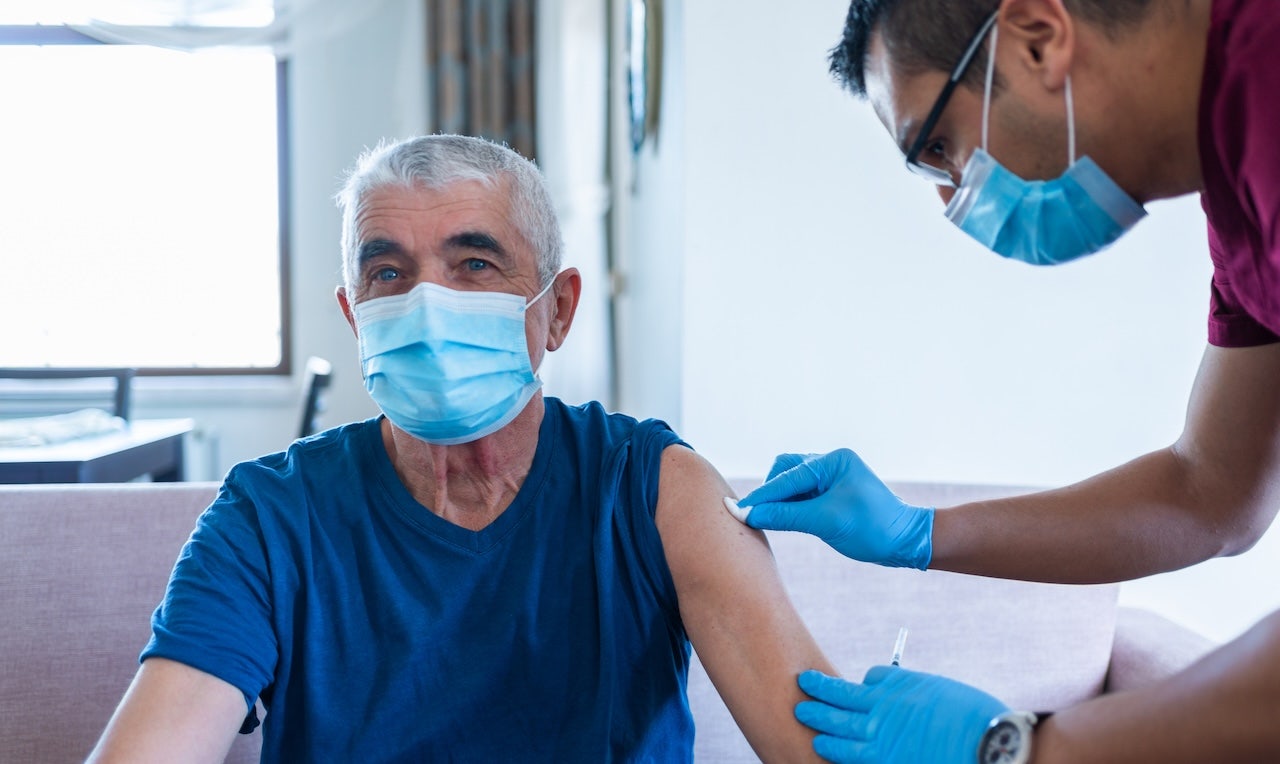Health
‘Forever Chemicals’ Are Everywhere. What Are They Doing to Us?

DuPont and 3M, which was manufacturing PFAS and using one in Scotchgard, began studying the potential health effects of their formulations in part as an occupational-safety measure. Initially, scientists assumed that because the first compounds were so stable and resistant to change — “inert,” in chemistry parlance — it would be impossible for them to interact with biological systems. The companies’ in-house experiments, along with other studies, quickly overturned that notion. By 1965, DuPont had indication that PFAS increased the liver and kidney weight of rats.
In the late ’70s and early ’80s, the companies were seeing alarming signals in their animal studies — in one study, monkeys exposed to extreme levels of PFAS died — and among their employees. In 1979, DuPont observed that workers who had contact with the chemicals appeared to have higher rates of abnormal liver function. In 1981, 3M researchers alerted their DuPont colleagues that pregnant rats exposed to PFAS had pups with eye irregularities; that year, an employee at a Teflon plant gave birth to a child with one nostril, a keyhole pupil and a serrated eyelid. In 1984, DuPont detected PFAS in the tap water of three communities near its West Virginia factory.
In 1998, 3M told the Environmental Protection Agency that it had tried and failed to identify members of the public without PFOS — a type of PFAS it was producing — in their blood. Two years later the company, which was the only U.S. maker of PFOS, announced that it planned to phase out its manufacture of the chemical. (3M had occasionally shared data with the E.P.A. in the 1980s; DuPont’s human and animal research wouldn’t become known until 2001, after a lawsuit forced the company to turn over documentation related to PFOA to opposing counsel, and he alerted the E.P.A. and other agencies.) In 1999, the National Health and Nutrition Examination Survey, an ongoing project run by the Centers for Disease Control and Prevention to track the health of the U.S. population, began testing for PFAS in participants and would confirm 3M’s observations: The chemicals were present in virtually everyone.
This revelation was met with a collective shrug by federal health officials and policymakers. More than two decades later, in fact, PFAS production remains largely unregulated. There are more than 12,000 variations of the chemicals, very few of which have been investigated for their potential health effects. Using data from the E.P.A. and other government agencies, the Environmental Working Group, a nonprofit research and advocacy organization, has mapped more than 41,000 places in the United States and its territories where PFAS are potentially being made, used or released: military sites, airports, landfills, wastewater-treatment plants, oil refineries. This year, the group announced that more than 2,800 domestic locations are confirmed to be contaminated with the chemicals.
PFAS can be removed from tap water, but according to the E.P.A., tap water typically accounts for only about 20 percent of a person’s overall exposure to the chemicals; we also eat them, inhale them and rub them on our skin. Testing by government agencies and watchdog groups have found PFAS in carpets, furniture, nail polish, shampoo, mascara, nonstick cookware, dental floss, raincoats, fast-food wrappers, pizza boxes, microwave popcorn bags, yoga pants, sneakers, sanitary pads, tampons, menstrual cups, bedding, upholstery, children’s pajamas, paint, vinyl flooring and artificial turf. They’re in the protective equipment used by firefighters and medical personnel. They’re in an especially effective foam for putting out fuel-based flames. They’re in dust and the household cleaning products you might use to get rid of it. They are in flamingos in the Caribbean and plovers in South Korea. They are in alligators. They are in Antarctic snow. In Europe, they’ve been discovered in organic eggs; in the United States certain states have found them in produce and meat. Last year, a study of PFAS in freshwater fish in the United States revealed median levels so elevated that eating a single serving could be equivalent to drinking PFAS-contaminated water for a month. In June, the U.S. Geological Survey reported that it had tested private wells and public water supplies and found at least one PFAS in 45 percent of the nation’s tap water.

Health
Trump’s Focus on Punishing Drug Dealers May Hurt Drug Users Trying to Quit

President Trump has long railed against drug traffickers. He has said they should be given the death penalty “for their heinous acts.” On the first day of his second term, he signed an executive order listing cartels as “terrorist organizations.”
But many public health and addiction experts fear that his budget proposals and other actions effectively punish people who use drugs and struggle with addiction.
The Trump administration has vowed to reduce overdose deaths, one of the country’s deadliest public health crises, by emphasizing law enforcement, border patrols and tariffs against China and Mexico to keep out fentanyl and other dangerous drugs. But it is also seeking huge cuts to programs that reduce drug demand.
The budget it submitted to Congress this month seeks to eliminate more than a billion dollars for national and regional treatment and prevention services. The primary federal agency addressing drug use, the Substance Abuse and Mental Health Services Administration, has so far lost about half its workers to layoffs under the Trump administration and is slated to be collapsed into the new Administration for a Healthy America, whose purview will reach far beyond mental illness and drug use.
And if reductions to Medicaid being discussed by Republicans in Congress are realized, millions of Americans will be unable to continue, much less start treatment.
The White House did not respond to requests for comment. The budget itself says that ending drug trafficking “starts with secure borders and a commitment to law and order” and that it is cutting addiction services deemed duplicative or “too small to have a national impact.”
Those cuts are agonizing, public health experts say, because they come just as the country is making sustained progress in lowering the number of fentanyl deaths. Many interventions may be contributing to that progress, including greater availability of the overdose reversal spray naloxone; more treatment beds, sober housing and peer counseling; and declines in the strength and quantity of the illicit drug supply, they say. But studies so far have not demonstrated convincingly which of those factors merit greater focus and investment.
“It would be a tragedy if we defund these programs without fully understanding what’s working and then our overdose rate starts to climb again,” said Dr. Matthew Christiansen, an addiction medicine physician in Huntington, W.Va., a city once labeled ground zero for the opioid crisis.
A letter signed by more than 320 behavioral medicine academic experts, sent Monday to congressional leaders, decried the cuts, including those to “community-based naloxone distribution, peer outreach programs, drug-use-related infectious disease prevention programs and drug test strip programs.”
The president’s budget calls for ending grants for “harm reduction,” a strategy to prevent disease transmission and keep drug users alive that has become largely accepted by mainstream addiction treatment providers.
The budget derides federal financial support for “dangerous activities billed as ‘harm reduction,’ which included funding ‘safe smoking kits and supplies’ and ‘syringes’ for drug users.”
That language is a callback to false reports in 2022 that a $30 million federal harm reduction grant could be used to purchase pipes for smoking crack and meth. In fact, a small portion of that grant, designated for “safer smoking kits,” was for supplies like alcohol swabs and lip balm. The grant also supported programs in states that permit sterile syringe exchanges, effective in reducing hepatitis C and H.I.V. infection rates.
“You can’t just tell people to stop using drugs with a snap of the fingers,” said Dr. Christiansen, a former director of West Virginia’s drug control policy. “These are tools to reduce the harm of opioids while also helping them be successful long-term.”
According to the federal agency’s annual survey of substance use, in 2023, 27.2 million Americans ages 12 or older had a drug use disorder, 28.9 million had alcohol use disorder, and 7.5 million had both.
The budget does leave intact block grants for states to combat addiction and mental illness. But without the agency’s additional grants, hands-on training and monitoring, in addition to possible Medicaid reductions, states will not be able to afford the many medical and social services required to prevent and treat addiction, Dr. Christiansen said.
David Herzberg, a professor of drug policy and history at the University at Buffalo, said that Mr. Trump’s almost single-minded linking of the nation’s drug problems with border issues harks back to late 19th-century America, when the government associated opium dens with Chinese immigrants. Fearing the incursion of Chinese workers and inflamed by press reports of Chinese men using opium to lure young white women into prostitution, Congress severely restricted Chinese immigration.
Then as now, Mr. Herzberg said, political conservatives found that targeting foreign drug suppliers was a muscular means of advancing broader agendas.
In contrast with highly publicized drug seizures, people who chronically use drugs have become afterthoughts, usually visible only as street irritants, their addiction perceived to be the result of their own choices, he said. Elected leaders who advocate for their welfare risk being tarred as soft on crime.
“If politicians are going to stick their necks out for them, I would be shocked,” Mr. Herzberg said.
Health
FDA warns seniors to avoid this vaccine after deadly complications

Trump, RFK Jr. launch $500M universal vaccine initiative
Fox News senior medical analyst Dr. Marc Siegel discusses the Trump administration’s initiative to develop a vaccine to target multiple viruses and the Murdoch Children’s Research Institute studying potential vaccines for strep.
Older adults are being warned against receiving the chikungunya vaccine before traveling.
The Ixchiq vaccination, developed by Valneva to prevent the mosquito-borne chikungunya virus, was approved by the Food and Drug Administration (FDA) in November 2023 as the first of its kind.
The approval applies to anyone aged 18 and older who has a risk of being exposed to the virus.
FIRST VACCINE FOR CHIKUNGUNYA VIRUS, AN ‘EMERGING GLOBAL HEALTH THREAT,’ GETS FDA APPROVAL
But the FDA and the Centers for Disease Control and Prevention (CDC) released a safety notice on May 9 recommending that adults over 60 years old pause use of the vaccine due to fatal complications.
“FDA and CDC will continue the evaluation of post-marketing safety reports for Ixchiq,” the release reads.
Older adults are being warned against receiving the chikungunya vaccine before traveling. (iStock)
“While the safety of Ixchiq for use in individuals 60 years of age and older is being further assessed, FDA and CDC are recommending a pause in use of the vaccine in this age group. FDA and CDC will update the public when the agencies complete their evaluation of this safety issue.”
The advisory follows reports of “serious adverse events,” including neurologic and cardiac events in people who received the vaccine.
Two of 17 events resulted in death from severe complications. One death was caused by encephalitis, or inflammation in the brain, the alert stated.
Those who experienced adverse effects of the vaccine were reported to be between the ages of 62 and 89.

A patient infected with chikungunya looks out from mosquito netting at the Clinicas Hospital in San Lorenzo, Paraguay, in March 2023. The FDA warned that Ixchiq, which contains a live, weakened version of the virus, may cause similar symptoms to chikungunya. (AP Photo/Jorge Saenz)
The FDA warned that Ixchiq, which contains a live, weakened version of chikungunya, may cause symptoms similar to the virus.
Typical symptoms of chikungunya include fever, severe joint pain, headache, muscle pain and a rash, according to the CDC.
CLICK HERE TO SIGN UP FOR OUR HEALTH NEWSLETTER
Most people recover within a week, but some may experience “severe and disabling” joint pain for weeks or months.

Chikungunya is spread by the bite of infected mosquitoes. (iStock)
“This virus is in a similar category as dengue or Zika and is carried by the same mosquitoes,” Fox News senior medical analyst Dr. Marc Siegel previously told Fox News Digital.
At the time of the vaccine’s approval, the FDA described chikungunya as an “emerging global health threat,” with at least five million cases reported over the past 15 years.
For more Health articles, visit www.foxnews.com/health
The FDA plans to conduct an “updated benefit-risk assessment” for Ixchiq use in those over 60 years of age, according to the notice.
Fox News Digital’s Melissa Rudy contributed to this report.
Health
Lose Weight up to 8x Faster With a ‘Green’ Diet for Fatty Liver

Use left and right arrow keys to navigate between menu items.
Use escape to exit the menu.
Sign Up
Create a free account to access exclusive content, play games, solve puzzles, test your pop-culture knowledge and receive special offers.
Already have an account? Login
-

 Austin, TX4 days ago
Austin, TX4 days agoBest Austin Salads – 15 Food Places For Good Greens!
-

 Education1 week ago
Education1 week agoIn Alabama Commencement Speech, Trump Mixes In the Political
-

 Technology1 week ago
Technology1 week agoBe careful what you read about an Elden Ring movie
-

 Culture1 week ago
Culture1 week agoPulitzer Prizes 2025: A Guide to the Winning Books and Finalists
-

 World6 days ago
World6 days agoThe Take: Can India and Pakistan avoid a fourth war over Kashmir?
-

 Education1 week ago
Education1 week agoUniversity of Michigan President, Santa Ono, Set to Lead University of Florida
-

 Technology6 days ago
Technology6 days agoNetflix is removing Black Mirror: Bandersnatch
-

 Politics1 week ago
Politics1 week agoEPA chief Zeldin announces overhauls to bring agency back to Reagan-level staffing
















